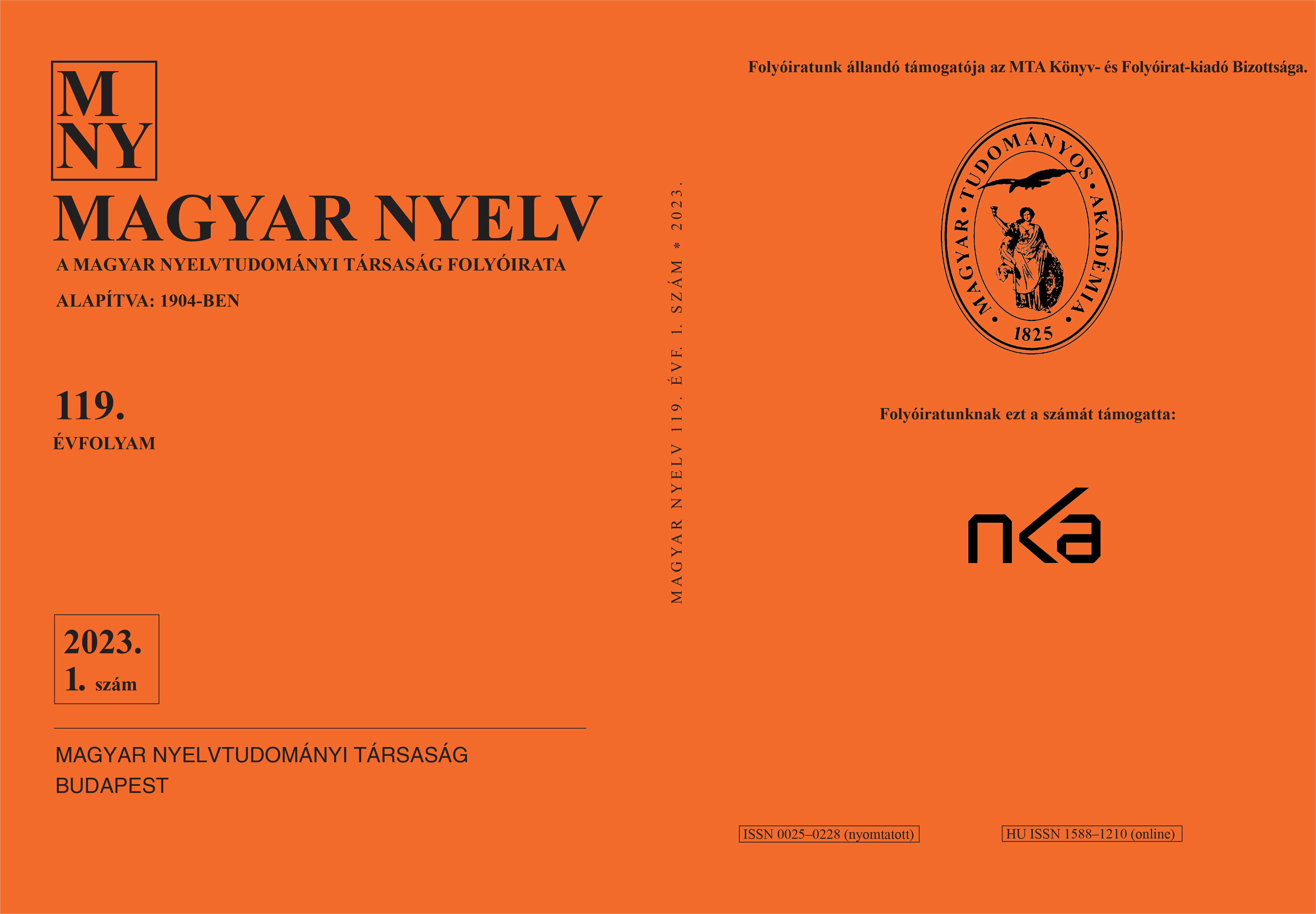Modal force – modal quality
A contribution to the corpus-supported analysis of linguistic modality
DOI:
https://doi.org/10.18349/MagyarNyelv.2023.1.35Keywords:
epistemic modality, discourse analysis, corpus linguistics, common groundAbstract
Epistemic modality is mostly treated in linguistics as a word or sentence semantic category. In the present study, this category is presented at the level of the text or discourse. By means of a quantitative study on a large text corpus, it is shown that the expressions of epistemic modality are combined within the text according to certain conventional patterns and together constitute the epistemic background. The speaker thereby positions both himself and his discourse partners. The possible epistemic backgrounds are described within the framework of common-ground theory. At the end, a German-Hungarian comparative analysis is presented in which interesting differences in the communicative strategies of the German and Hungarian discourse participants are brought to light.
Downloads
Published
Issue
Section
License
Copyright (c) 2023 Attila Péteri

This work is licensed under a Creative Commons Attribution-NonCommercial-NoDerivatives 4.0 International License.
Magyar Nyelv is a Diamond Open Access periodical. Documents can be freely downloaded and duplicated in an electronic format, and can be used unchanged and with due reference to the original source. Such use must not serve commercial purposes. In the case of any form of dissemination and use, Hungarian Copyright Act LXXVI/1999 and related laws are to be observed. The electronic version of the journal is subject to the regulations of CC BY-NC-ND (Creative Commons – Attribution-NonCommercial-NoDerivatives).
The journal permits its authors, at no cost and without any temporal limitation, to make pre-print copies of their manuscripts publicly available via email or in their own homepage or that of their institution, or in either closed or free-for-all repositories of their institutions/universities, or other non-profit websites, in the form accepted by the journal editor for publication and even containing amendments on the basis of reviewers’ comments. When the authors publicize their papers in this manner, they have to warn their readers that the manuscript at hand is not the final published version of the work. Once the paper has been published in a printed or online form, the authors are allowed (and advised) to use that (post-print) version for the above purposes. In that case, they have to indicate the exact location and other data of the journal publication. The authors retain the copyright of their papers; however, in the case of an occasional secondary publication, the bibliographical data of the first publication have to be included.



